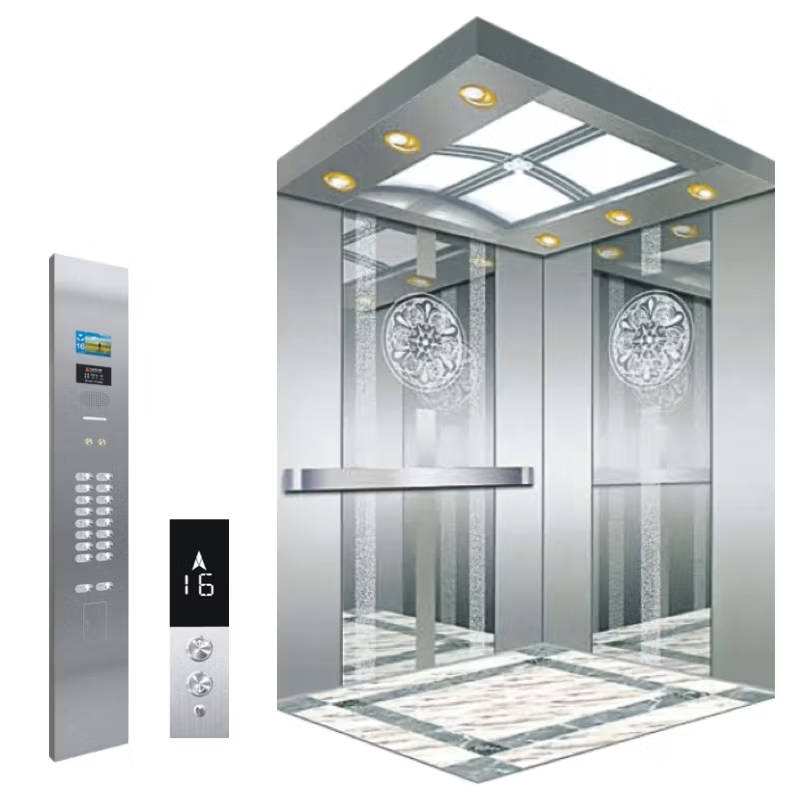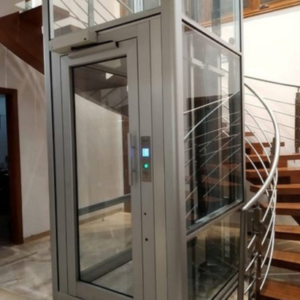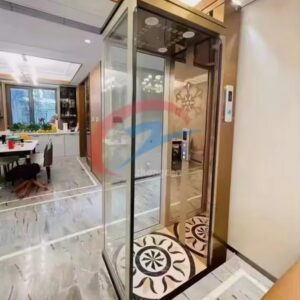Elevator for 7 Floors
An elevator for 7 floors provides reliable vertical transportation in residential, commercial, and industrial buildings. Designed for efficiency, safety, and comfort, it features advanced control systems, smooth operation, and modern aesthetics. With spacious cabins and energy-saving technology, it ensures convenient and seamless movement between multiple levels.
Product Description
Elevator for 7 Floors
An elevator for 7 floors is a highly efficient vertical transportation system designed to provide smooth and reliable movement across multiple levels. It is commonly installed in residential buildings, commercial offices, shopping malls, hospitals, and hotels, ensuring convenient access between floors. These elevators are built with advanced technology to enhance safety, speed, and energy efficiency, making them an essential addition to modern structures.
A 7-floor elevator is designed to handle moderate to high passenger traffic while maintaining a comfortable riding experience. It comes in various drive mechanisms, including hydraulic, traction, and machine room-less (MRL) systems, each offering specific advantages based on building requirements. The interior of the elevator is crafted with high-quality materials, featuring sleek designs, LED lighting, digital control panels, and ventilation systems to improve passenger comfort.
Design and Features
The design of a 7-floor elevator is optimized for both functionality and aesthetics. These elevators are available in different cabin sizes, ensuring they accommodate varying passenger capacities. Many models come equipped with automatic sliding doors, ensuring seamless entry and exit. Additionally, some elevators include voice announcements and Braille buttons to enhance accessibility for individuals with disabilities.
The control system of a 7-floor elevator is programmed to optimize travel time by minimizing waiting periods and reducing energy consumption. Smart technology, such as destination control systems, allows passengers to select their desired floor before entering, improving efficiency during peak hours.
Safety and Security
Safety is a primary consideration in the design of 7-floor elevators. These systems are equipped with multiple security features, including emergency stop buttons, overload sensors, and automatic door sensors. The emergency braking system ensures that the elevator halts safely in case of mechanical failure. Additionally, fire-resistant materials and ventilation systems are incorporated to maintain passenger safety in emergency situations.
Many elevators also come with backup power systems, allowing continued operation during power outages. In the event of an emergency, intercom systems enable direct communication with building management or emergency responders.
Energy Efficiency and Performance
Modern 7-floor elevators are designed to be energy-efficient, reducing overall electricity consumption. Regenerative drive technology is often used in traction elevators to capture and reuse energy, lowering operational costs. LED lighting, standby modes, and efficient motors further contribute to sustainability. Some models use gearless traction systems, which provide smooth operation, less noise, and increased durability compared to traditional gear-driven systems.
Hydraulic models are suitable for low to mid-rise buildings, operating with a fluid-based system that ensures a steady ride. However, traction elevators are more common in taller buildings due to their superior energy efficiency and speed capabilities. Machine room-less elevators, on the other hand, save space by eliminating the need for a separate machine room, making them a preferred choice in modern constructions.
Installation and Maintenance
The installation of a 7-floor elevator depends on factors such as building design, available space, and lift type. Professional installation ensures compliance with safety regulations, optimal functionality, and long-term reliability. The process may take several weeks, depending on the complexity of the system and structural modifications required.
Regular maintenance is essential to keep the elevator in top condition. Routine inspections include checking the control systems, motor function, door mechanisms, and emergency features. Lubrication of moving parts and software updates ensure smooth operation and prevent unexpected breakdowns. Many manufacturers provide maintenance contracts to guarantee consistent performance and timely repairs.













Reviews
There are no reviews yet.